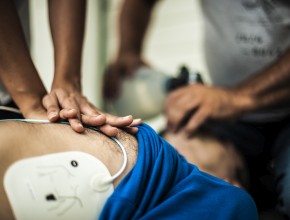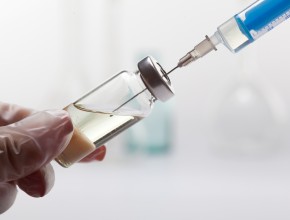Chondroitin in long-term treatment of knee osteoarthritis
Pharmaceutical-grade chondroitin is a reasonable alternative in long-term treatment of patients with osteoarthritis (OA) of the knee.
Over 600 patients diagnosed with knee OA were randomized to receive placebo, 200 mg of celecoxib, or 800 mg of chondroitin sulfate (CS) per day. The efficacy of treatment was assessed over 180 days using a visual analogue scale (VAS) for pain (scores ranging from 0 to 100 mm) and the Lequesne index (scores ranging from 0 to 24 points, integrating subjective pain and function assessment).
All groups started with the VAS pain score around 70 mm. In each treatment group, including placebo, major improvements were seen after one month of treatment (VAS pain scores around 50 mm in each group). Throughout 6 months of treatment, the effects of celecoxib and CS were similar, without clinical or statistical differences observed. The difference between those treatments and placebo was observed only after 6 months, with an overall decline in the VAS pain score of 42.6 mm in the CS group, 39.5 mm in the celecoxib group, and 33.4 mm in the placebo group. On the Lequesne index, the trend was very similar, with declines by 4.7 points, 4.6 points, and 3.9 points, respectively.
The authors postulate that symptomatic slow-acting drugs for OA (including CS and glucosamine sulfate) may and – in their opinion – should play a larger role in long-term treatment of knee OA. They have also noted that their findings may not apply to nonregulated, nonprescription formulations of CS.
Risperidone and haloperidol in patients with delirium receiving palliative care
In patients receiving palliative care and experiencing delirium, the addition of risperidone or haloperidol was inferior to continuation of supportive care and individualized attention to delirium precipitants.
The study included 247 patients, out of which over 200 had cancer. They were divided into three groups counting at least 80 patients who received placebo, haloperidol, or risperidone. The doses included a 1.0 mg loading dose followed by 0.5 mg every 12 hours. There was a possibility of dose increase up to a maximum of 4 mg per day. For patients over 65 years of age, the dose was decreased by half. All patients received individualized treatment of delirium precipitants, nonpharmacological interventions (hydration, vision and hearing aids, reorientation, presence of family members), and subcutaneous injections of midazolam for severe distress.
The effects were analyzed using a 6-point delirium symptom severity score measured at baseline and at day 3, with higher scores representing more severe delirium. The delirium symptom score was 0.48 points higher for the risperidone group and 0.24 points higher for the haloperidol group compared with placebo.
The authors concluded that in their clinical setting, the addition of low-dose neuroleptic drugs was detrimental rather than beneficial.
Self-monitoring of glucose in patients with non-insulin-treated type 2 diabetes
Among patients with type 2 diabetes mellitus, self-monitoring of blood glucose (SMBG) did not result in improved glycemic control and health-related quality of life.
This study included 450 patients over the age of 30 with hemoglobin A1c levels between 6.5% and 9.5%. The groups used no monitoring, once-a-day monitoring, or once-a-day monitoring with tailored automatic messages.
Over 52 weeks, there were no clinically or statistically significant differences in the hemoglobin A1c level (compared with the no SBGM group, it was 0.05% lower in the group with daily SBGM and 0.09% lower in the group with daily SBGM and automatic messages). There were no differences in the frequency of hypoglycemia, use of health-care resources, health-related quality of life, and initiation of insulin.
 English
English
 Español
Español
 українська
українська







